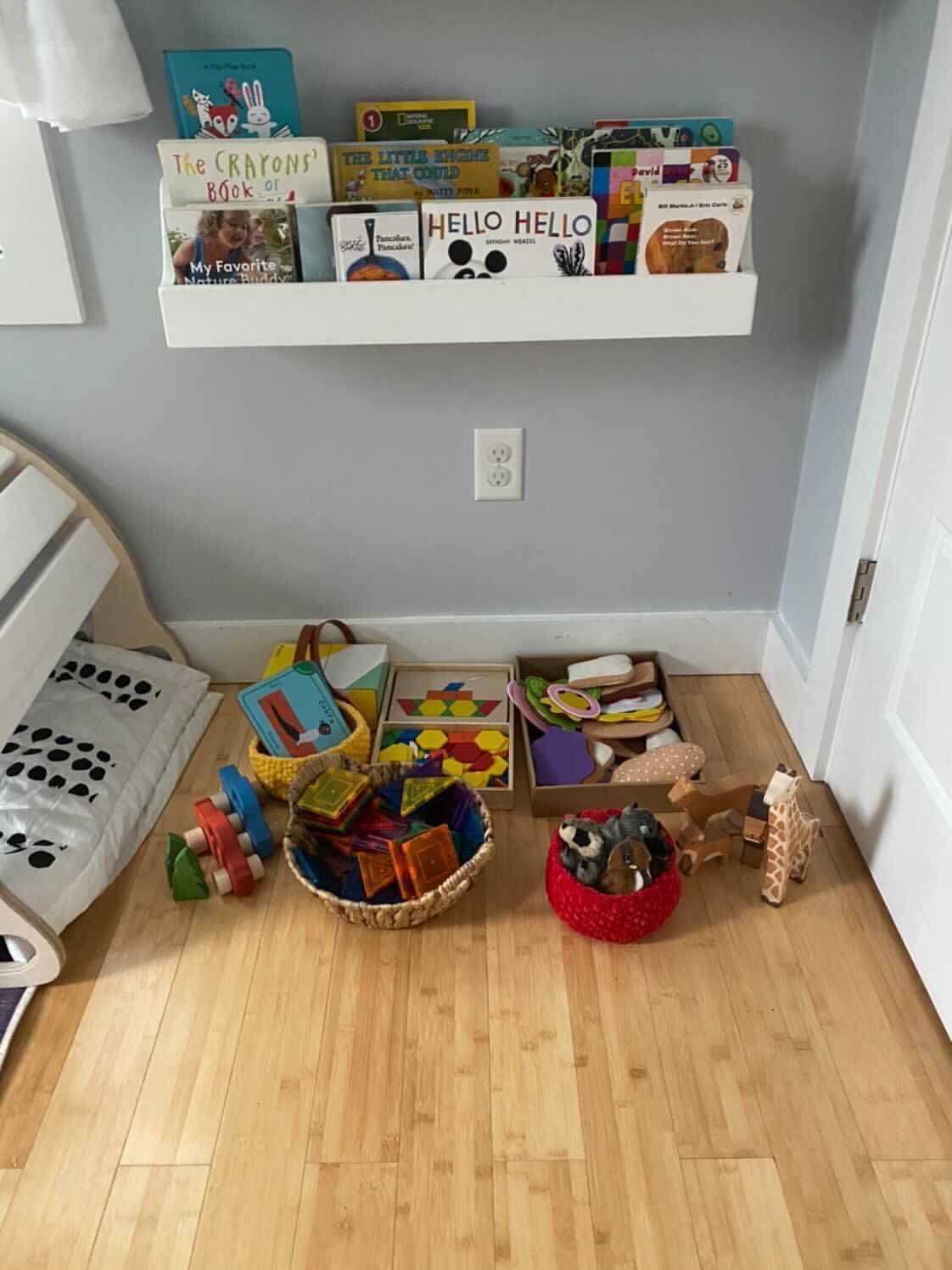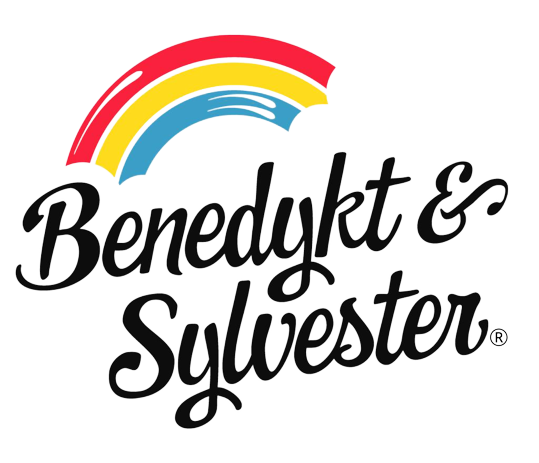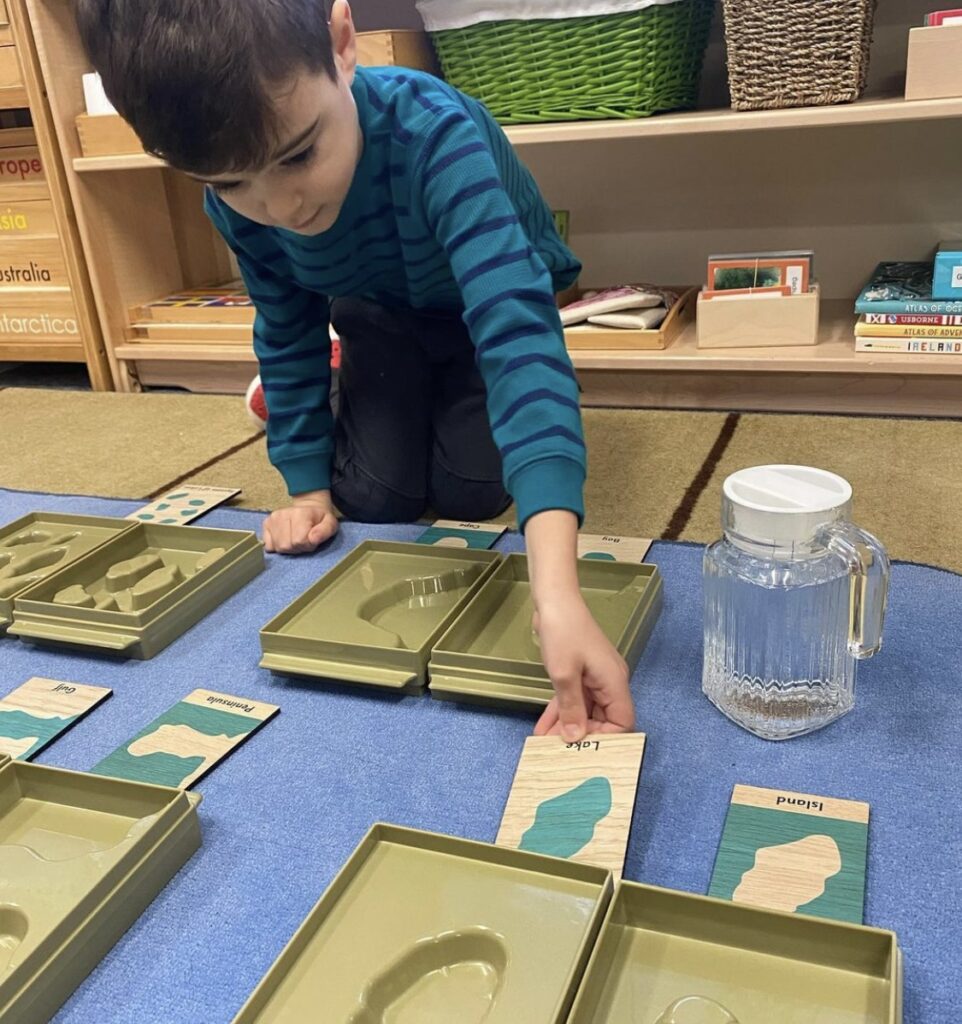What are Montessori Learning Materials?
Montessori Learning Materials are tools or resources, often sensory or skills based, that provide children with opportunities to learn independently, allowing them to practice and learn a new skill. Montessori resources will often have a specific purpose in mind, teaching a child about a particular concept or skill, and will contribute to purpose in care of the self, community, and environment (1). Often made from natural and sustainable materials, Montessori resources are generally considered to be eco-friendly and designed in a way that a child can complete the task or activity with little guidance, working it out for themselves and correcting mistakes through their own trial and error.
Montessori materials will also often be monochromatic, with little difference in sensory attributes (e.g. made from only one colour and one material) so as not to be over-stimulating, allowing the child to focus on the task at hand (2).
Many Montessori learning materials that are available may also be referred to as Montessori toys; head over to our blog on whether such products are truly aligned with Montessori principles here to find out more.
The Most Popular Montessori Learning Materials
There are a few stand-out and popular Montessori learning materials items that align with the Montessori method of learning that are proving a hit popular with parents and Montessori schools alike. Here are some of our favourites:
- Learning Tiles or DIY 3 part cards
- Personalised Placemats
- Tracing Boards
- Cleaning/cooking/household jobs equipment and activities (suitably adjusted for size and age)
- Sensorial objects (e.g. counting beads, rice etc.)
- Wooden 3D shapes
- Appropriately sized utensils and equipment (e.g. cooking utensils for tiny hands, low shelves so children can independently access materials and resources)
How do you organise and display your Montessori Learning Materials?
Once you embark upon the Montessori method, it can be a very daunting task to organise all of your Montessori supplies and toys, keeping in mind that they should be accessible to your children and easy for them to take out/put away, as is the Montessori way. The first step is to make use of furniture that is low down so your children can see and access the materials and resources they wish to use. Sarah at Montessori and Ushas a perfect example of a spacious, well organised Montessori play area, using IKEA furniture (Kallax Units). See how all the available toys are displayed in such a way that it looks appealing and enticing for a child, but also offers a child full independent access.

In our own home, we have a similar layout in a differing style. I also use an IKEA unit, known as a Besta. The benefits of having this over a kallax is that it offers wider shelves for larger toys, but it is a detail that is down to preference.

This type of storage in the Montessori Method is not isolated exclusively to Montessori learning materials. It would be beneficial to a child to have independent access to all of their own things, and so for example, we have also got a small wardrobe that displays Sylvester’s clothes. We made this from an IKEA Kallax. He is able to select his own clothes and get them out (and put them away!) by himself.

The benefit of display of the child’s own belongings goes beyond just independent access. Giving them these choices and access not only enables a child to see their belongings, but it also helps them to feel more responsible of this ownership. This pride allows a child to learn how to care for their items as well as them self. They are able to replace the items after they have finished using them too, teaching them discipline. They automatically get a sense of accomplishment when they have more control over their things, than having to ask for help.
Montessori Toy Rotation
Once you have suitable furniture on which to store your Montessori learning materials, you now need to think about how you are going to organise them to be able to offer a good range of different resources to your child at a time. Offering everything you own at one time can be too overwhelming for a child. The aim of toy rotation is to only offer a select few items at a time to a child, that cover a broad range of topic, skills and interests. When the child has explored that set, you can rotate those toys out of view and put them into storage, and bring out a new collection of materials they haven’t seen for a few weeks. When a child sees the new selection, they have a sense of novelty once again. To that effect, toys that you have had for a while have a refreshed sense of “newness” and are more likely to be enjoyed over and over again. Toy rotation also offers you as a parent a chance to hone in on your child’s interest and offer learning materials that appeal to them at certain stages. This would be a great way to follow your child. There are several ways you can categorise:
- Type of activity e.g. matching, fine motor skills etc.
- Themes e.g. household jobs, garden/outdoors, sensory play, academia, or by subject etc.
- Area e.g. kitchen, living room, bedroom, classroom etc.
Once you have categorised your toys you can then group them so that you can bring out one group at a time. You can keep them out for as long as your child(ren) are interested in them. I’d recommend a weekly Montessori toy rotation schedule, or a 2-weekly one if that suits you better. It’s important to remember that there is no right or wrong way to rotate toys. If you observe your child is enjoying a particular toy, don’t feel like you should swap it out with the rest of the rotation just because “it’s time”. Keep out beloved toys for as long as they are beloved to your child.
I love the following picture of an example of one of Bringing Up Babe‘s toy groups:

Types of Montessori Storage
Next, you may want to consider the types of storage you will use in which to keep all of these out-of-rotation Montessori learning materials. You could use clear plastic bins (boxes), baskets, trays or fabric bags to store your resources. Bringing Up Babe on instagram uses these boxes, which are great because as they are transparent, you can see what’s inside them:

If you use opaque storage, you may want to utilise some sort of label system so you know which resources are in which boxes. For children who are yet to learn to read, you could use pictures so they are able to independently distinguish which boxes hold the resources they are looking for.
Some resources may be free-standing, and as such won’t need to be placed in a box or labelled, however they can be grouped together in similar themes; this will help your child to work out what it is they want to learn about and allows them to choose the type of activity they want to complete. You may even decide that you don’t want to use storage boxes at all – check out How We Montessori for some minimalist Montessori storage inspiration!
Montessori Placemat – a Montessori learning material example

One of our most popular Montessori learning materials are our personalised Montessori placemats. Made from solid natural acacia wood, this durable placemat helps to create a sense of order and routine at the dinner table, teaching your child how to lay the table as they begin to recognise the places for cutlery and crockery. This is a great first step in involving your child in the processes of the kitchen and may pique their interest in how meals are created from raw ingredients.
This fully aligns with the Montessori method, where ‘play is the work of the child’, and they will become interested in activities like chopping vegetables and serving meals to their family members. The Montessori placemat gives children a sense of identity and purpose around the dinner table, and is a great introduction to eating home-cooked meals as a family and learning good table manners. Our placemats had a profound effect on Benedykt, and here he is a few month’s later still, if not more, enthusiatic about the task in hand:
Montessori learning materials for Preschool, Nursery & Kindergarten
Some Montessori learning materials are not only great for use at home, but are also being utilised in Montessori preschools, nurseries and kindergartens. Our Montessori learning tiles, for example, cover a range of topics and are regularly utilised within Montessori classrooms across the world. These can be used to make matching and puzzle games, as well as teach children to categorise objects and recognise them through their differing features using the learning tiles as a reference. With a large variety of topics, from science to geography and everything in between, learning tiles make great Montessori classroom materials and can be used in a variety of ways: teaching facts, prompting materials, matching games, categorisation and identification, to name a few. Here are our Land and Water form tiles being used in a classroom in Canada:

Below is a prime example of a Montessori classroom. Note how the shelves are low, and give a child an appealing display of all the resources on offer. See how the display boards are at a low level, too, so that they can be seen by the children. It is important to appreciate that display pieces aren’t always for decoration, but often give an educational purpose, too.

Tracing equipment such as alphabet tracing boards, number tracing boards, and counting tiles are a great introduction to the written forms of letters and numbers to prepare your child for a Montessori nursery. Initially, no writing utensil is needed, and young learners can begin to develop their fine motor skills by simply tracing with their fingers or filling the indentations with materials such as rice. You can even dye rice different colours or use essential oils for additional sensory experiences (we recommend one of these at a time so your child isn’t overwhelmed – this can lead to sensory overload and can mean that it is more challenging for learning to take place due to the sensory distractions). Activities and Montessori learning materials that use sensory or small objects are often presented for use and display on a tray. Particularly in a Montessori nursery classroom, this enables a child to collect the activity from the shelf and independently take it to their personal workspace and back again when they have completed the activity.

Benedykt & Sylvester money boxes represent a plethora of academic learning opportunities that your child will utilise in the future at a Montessori preschool. They introduce the concepts of numbers, money and sorting items (coins) into categories based on their properties. This is simultaneously a sensory (looking at and feeling the coins), mathematical (learning about numbers and counting) and practical (understanding the concept of money) Montessori learning materials that will grow with your child throughout their developmental stages. Initially, they may find simple joy in putting coins into the slot, developing fine motor hand skills; over time, they will be able to differentiate between the different coins and, eventually, attribute value to them and learn that money can be exchanged for goods.

References

